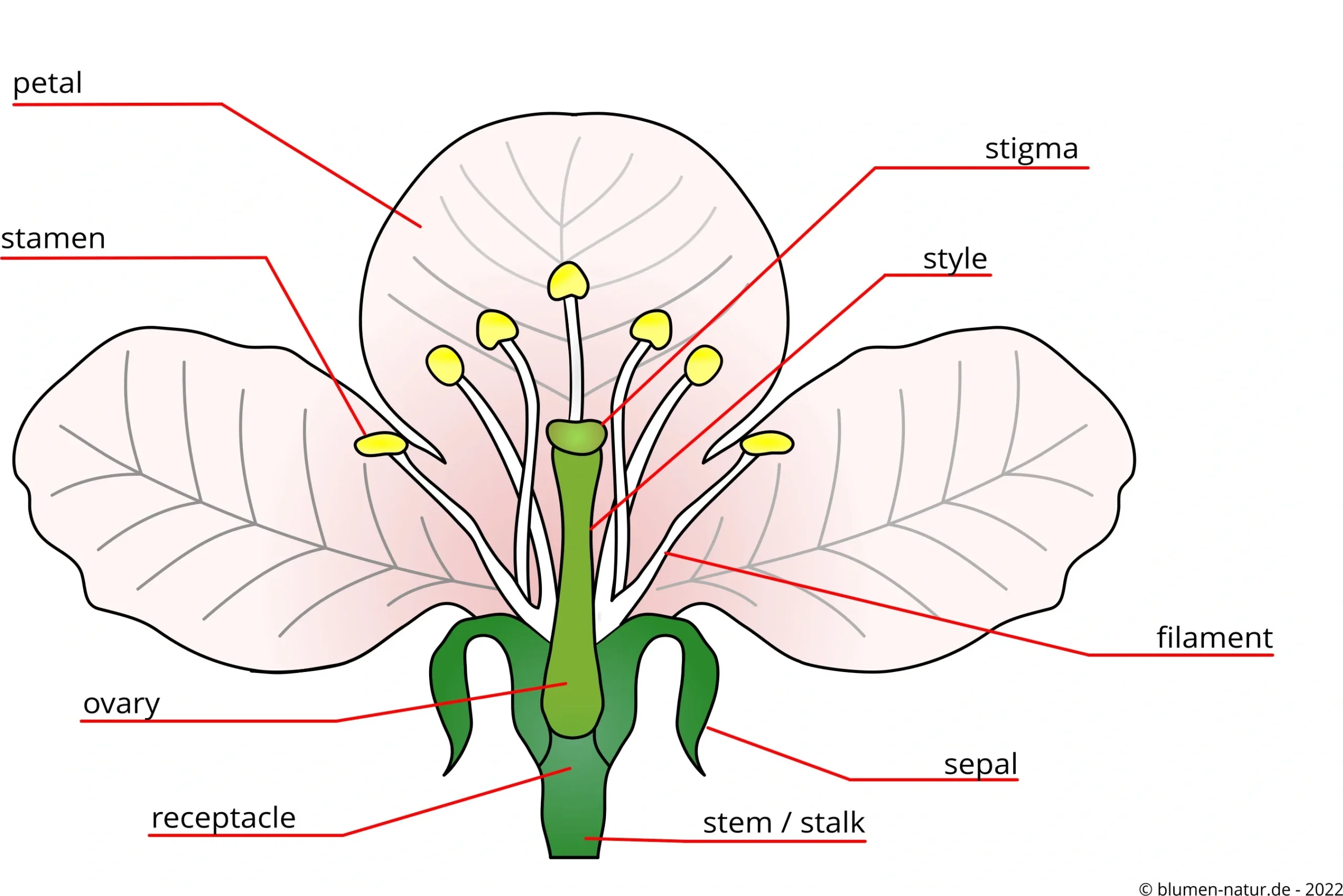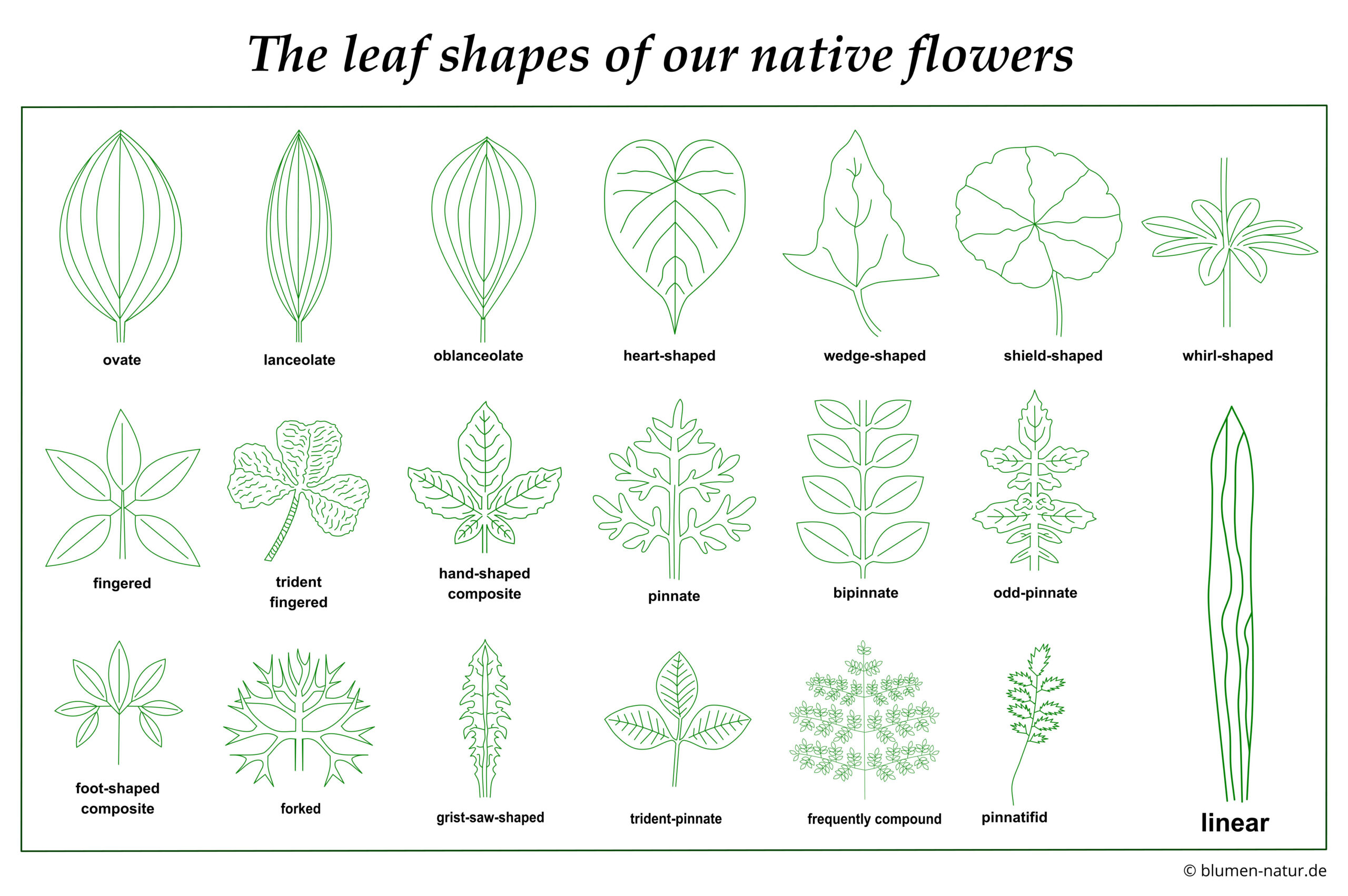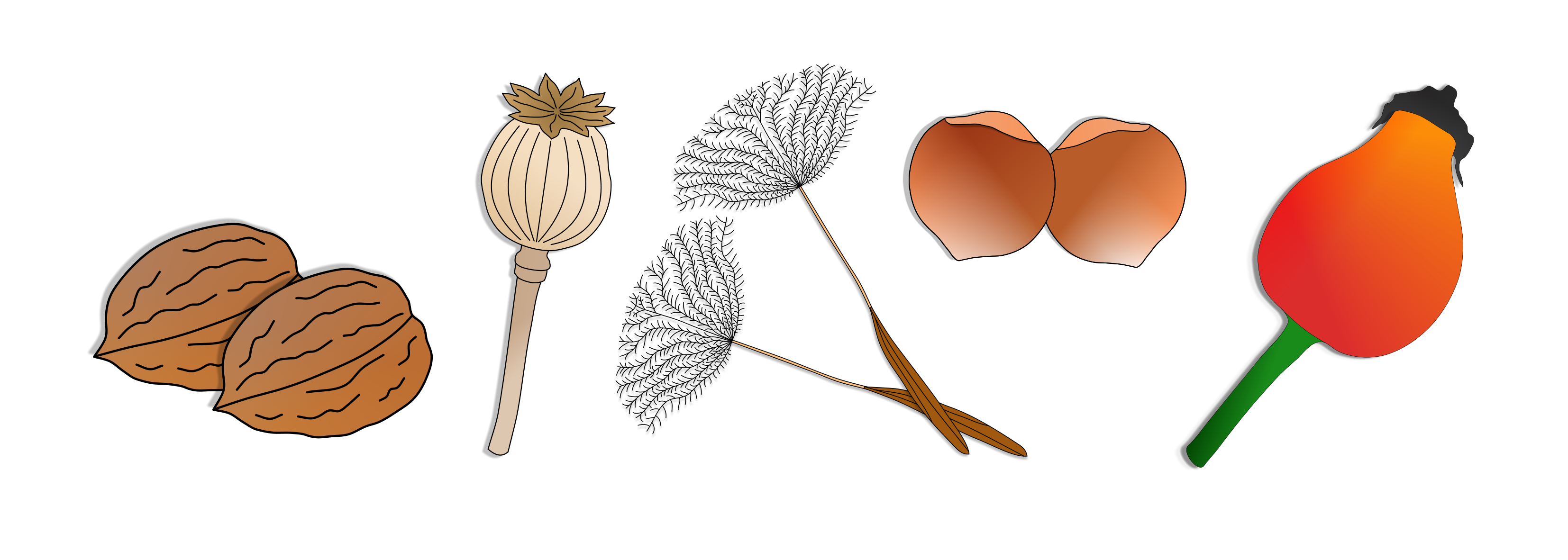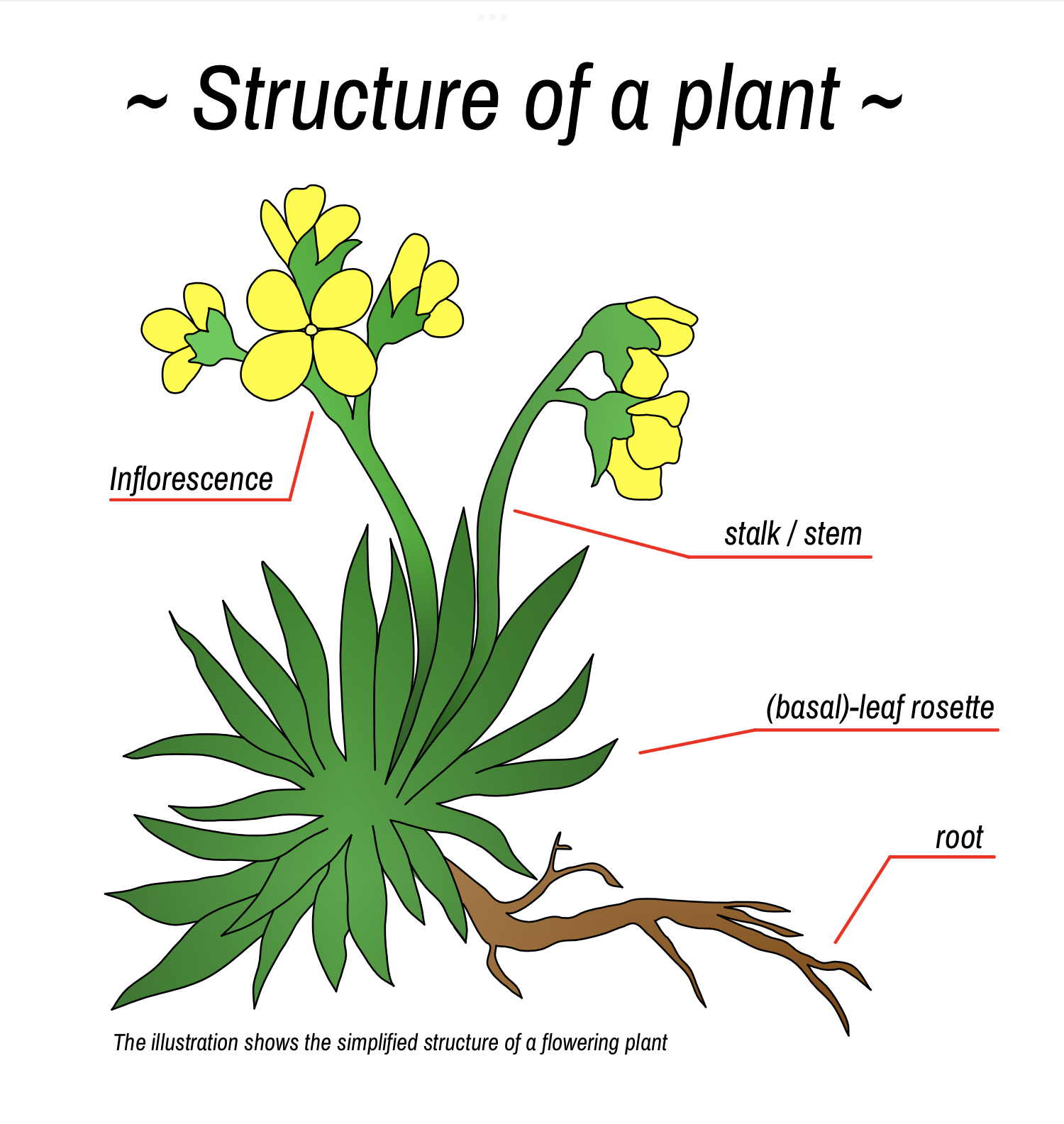This part of the website explains some special terminology in botany and plant identification. This page can also be used as a dictionary / reference while reading the individual articles.
~ a PDF with the most important information on the subject of “plant identification and its special terminology” is available here ~

The blossoms can be divided into different shapes. The most important blossoms shapes are listed below.
- radial (round) blossoms with 3 – 6 (or more) petals: This is one of the simplest types of blossoms; the petals are arranged in a circle around the centre of the blossom. All petals are the same size.
- zygomorphic (single-axis symmetrical) blossoms: The blossom consists of two equal flower halves. The simplest example of this is the pansy.
- trumpet-shaped blossoms: Petals that have grown together to form a funnel.
- lipped blossoms: A special zygomorphic flower. It is best known for the sage. The flower consists of 5 petals.
- Small flowers in dense clusters: In most cases these are many individual flowers, as in case of yarrow. The flowers can also form a false inflorescence as in the case of daisies. These have a multitude of tubular flowers in the centre.


The following graphic illustrates a simplified view of the structure of a typical flower.

~ a high-resolution version for printing can be downloaded here ~

Based on the outer shape of the leaves, they can be categorised. I have compiled the most important of these shapes in the following diagram. The leaf shape is one of the most important parts in the identification of a plant, next to the blossom shape. Thus, a plant can also be identified before or after the flowering period.

~ a high-resolution version for printing can be downloaded here ~

- pappus: A seed cluster consisting of many individual seeds with floating hairs at their ends. Typical for thistles, dandelions and other similar plants.
- fruit: Seeds that are surrounded by a pericarp. An example of this is the rosehip.
- capsule fruit: The seeds are located in a dry fruit consisting of several carpels. Typical for poppies, irises, evening primroses and the annual silverleaf.
- nut fruit: Only one seed forms in a fruit with a hard shell. Typical of the common hazel but also trees such as beech and the walnut.


The following graphic shows a simplified representation of the structure of a typical plant.

~ a high-resolution version for printing can be downloaded here ~

Letter A
- achene: The one-seeded fruit of composite plants. It is a nut-like closing fruit. A particular example of achenes are the yellow seeds of strawberries.
- angiosperm: The seeds of this plant are enclosed in an ovary.
- annual: The plant lives only one year and dies after seed formation in the fall or winter.
- anther: An anther is formed at the end of the stamen. This is where the pollen is formed, which is needed for pollination of the plant.
- awns: Small, bristly plant parts that are formed at the end of cereal grains and sometimes on composite plants. Most cereals grow short or long awns. The longest awns are formed on barley.
Letter C
- corolla / perigone leaves / tepals: These are the colored leaves of the flower. They are also called petals and give the flower its shape. Tepals in this case are the same looking petals which all have the same shape.
- corymbus: All flowers are in one plane but are fused to the stem at different heights like a cluster. The lowest flowers have the longest stems.
Letter E
- endemite: This term originates from biology and includes plants or animals that only occur in a specific, spatially clearly defined environment.
Letter F
- flower base: The lower part of the blossom where the flower and stalk meet. This is typically also where the ovary and sepals are located. The petals are also fused to the flower base.
- flower head: a synonym for the individual flowers in an inflorescence
Letter G
glumes: special name for the blossoms of grasses.
Letter O
- ovary: After pollination, the seeds are formed in this fruit – occurs only in angiosperms.
Letter P
- perennial: the plant can live for several years and produces flowers and seeds several times in its lifespan.
- pistil: part protruding in the middle of the flower, which is responsible for the formation of pollen. This pistil consists of the stigma, pistil and ovary.
- pseudoflower: pseudoflower is not a real flower. They are more leaves that can take on a different color.
Letter R
- rhizome: This is the part of the root of a herbaceous plant that is close below the soil (often branched).
- rosette-like: the leaves are arranged all around the plant. Often it is also called a basal leaf rosette. Here the leaves sit close to the ground.
Letter S
- sepal: a leaf at the base of the blossom which forms the outer covering of the flower.
- spikelet: A floral form commonly found in grasses. Each spikelet has two outer glumes. This is followed by the inner lemma. From the lemma often hang three long and thin stemmed stamens and a stigma & pistil.
- spike: A spike consists of individual sessile blossoms which are arranged one above the other on the stems.
- staminal filament: This is a thin stalk at the end of which the anther is formed.
- stem: The ascending part of the plant that develops above ground and bears the leaves and flowers.
- stigma: This is the upper part of the pistil. The male pollen is bound to the stigma and fertilization of the flower occurs.
- stylus: the transitional part of the pistil between the receptacle and the stigma.
Letter U
- umbel: The flowers sit together at one point on the stem in the middle and spread out in a hemisphere
- umbel rays: The flower stalks of an umbel flower, which converge on a thicker stem.
- umbellifer: An blossom consisting of several single flowers branched in a umbel.
- upper lip: upper part of a zygomorphic flower.

The “Red List” is a list for nature conservation to document the endangerment and extinction of species. There are different categories on the “Red List”
- Endangerment level 0: the species is extinct or lost
- Endangerment level 1: the species is threatened by extinction
- Endangerment level 2: the species is highly endangered
- Endangerment level 3: the species is endangered
- Endangerment level V: the species is already potentially endangered
- Endangerment level R: the species is considered extremely rare, but is not endangered.
In addition, various regulations can be applied to species that are particularly strictly protected:
-> Federal Species Protection Ordinance (German law): BArtSchV
-> Washington Convention on International Trade in Endangered Species: CITES
-> Federal Nature Protection Act (German law): BNatSchG

I offer my help in identifying plants to anyone for free. Just drop me an email and I can help.